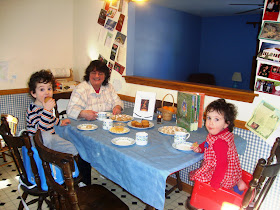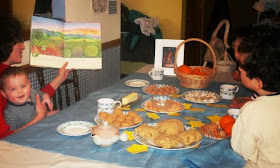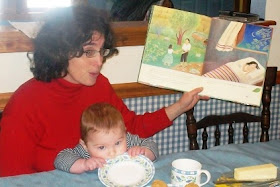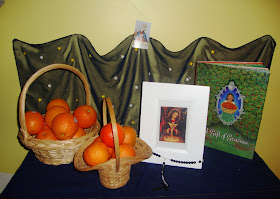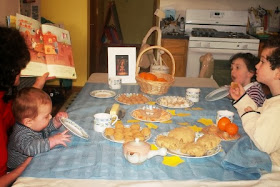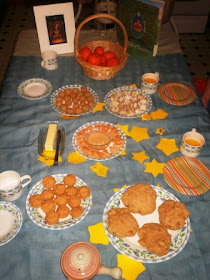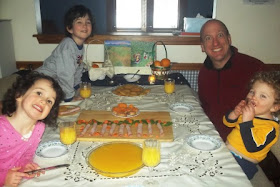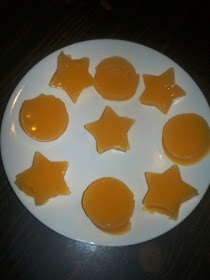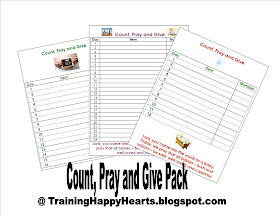 |
| Look for the Giveaway at the bottom of this post! |
Quick. Look around. Is your laundry basket empty? Are your dishes clean? Are your children happily engaged? Did you connect with your spouse today? Have you spent some quiet time in prayer? Are you online anyway?
If you’re like me, your answers to the first several questions may be “no”, while your answer to the last one may be “yes”. And, therein lies a trap that many of us fall into: We work and play online even when our homes and relationships beg for attention.
It was for this very reason that I was ultra-excited when I was offered a chance to read
Growing Your Blog While Managing Your Home The Ultimate Guide for Christian Mommy Bloggers in exchange for an honest review as a part of the book’s launch. For, as I have been l
istening to my heart and my head over the past several weeks, I have heard two conflicting message: “Get yourself, your marriage, your marriage, your homeschool efforts and – yes, finally! – your house in order.” And “Use your interests and gifts online more in the coming year in order to bless others and your family.”
To date, honoring myself, my husband, my children and our home has been challenging enough. Doing so while keeping paid employment contracts and blogging in balance has been even more difficult. I admit it. I find working and blogging easier to focus on at times than say, facing the fact that housekeeping is not one of my gifts.
So, I was looking forward, to the direction and tips Growing Your Blog While Managing Your Home might offer, especially in light of the fact that they promised to come from a faith-based perspective. Since, for me, faith is the foundation for everything.
Does Growing Your Blog While Managing Your Home Live Up to Its Title?
In
Growing Your Blog While Managing Your Home, successful author Jacinda Vandenberg offers
60+ jam-packed pages of information and encouragement to help any Christians Mommy Blogger improve a blog without overlooking the more important aspects of life: husband, children and home. In fact, as I came away from my first sitting with the book, two takeaway messages reverberated in my head: “God, spouse, children, house. Then blogging,” (an order of focus that Jacinda reminds readers of more than once) and the idea that “When our priorities are aligned in accordance with God’s will, then we can expect His blessing”, even in blogging.
I also came away with huge chunks of each portion of Jacinda’s book highlighted as parts I want to go back to reflect upon or dive into to put into action.
Where and How Does Blogging Fit into Life
Part 1 of
Growing Your Blog While Managing Your Home, Creating a Vision and Maintaining a Schedule, explored the big question many Christian Bloggers face at one time or another: "To Blog or Not to Blog?" and continued on to answer the question with practical tips for home and time management.
In Part 1, words I currently am reflecting upon include:
" ... a blog can be a tremendous asset to your role as Keeper of the Home! My blog enables me to contribute to the family income, minister to others, and pursue activities that benefit my family - all of which are characteristic of the woman in Proverbs 31."
"Schedules and routines are designed to serve you, not the other way around. Learn to be flexible and roll with the punches. It's good to have a vision (Proverbs 29:18) ... (but remember that) ...God often allows disruptions to teach us life lessons, bring blessings in disguise, remind us of our dependence on Him, and equip us with grace to overcome obstacles greater than our own strength could bear so that His name is ultimately glorified."
"Since I’ve committed to spending the bulk of my time online when the kids are sleeping, I have to manage it efficiently. I have a list of things to do, and only so many hours in which to do it!" coupled with "Commit to not going online unless you already know what you plan to say."
Between these quoted portions from Part One,
Jacinda offers real-life examples, tried-and-true strategies and practiced perspective about how to manage a home and a blog. So, in a word, in Part One alone, YES, the
Growing Your Blog While Managing Your Home lives up to its title.
Part One elaborates on managing your home while real meat fir growing your blog comes in Parts Two, Three and Four of the book.
I Know My Blog Needs Revamping, Now I Know How to Begin
Part 2, Content and Design offers a helpful list of considerations to guide bloggers in creating, or in my case, revamping a blog to be the best it can be.
I admit that when reading this part of the book I cringed, knowing my “failures” in certain aspects of content and design. However, my cringe quickly became a sigh of relief. For Jacinda not only lists considerations about what makes for effective content and design, but she also offers specific direction for making should do’s did do’s. With her guidance, if God wills it and time and energy align, I am confident that I can improve the experience of readers on my blog!
Can My Blog Really Bless My Family Financially While Maintaining Integrity and Helping Others?
Part 3 of the book, Growth and Monetization, encouraged me with a huge: Yes, I can, improve my blog, maybe earn some helpful income, and live and blog with integrity. For, in this portion of
Growing Your Blog While Managing Your Home, J
acinda seems to answer all the questions I have ever had about blogging as a business, and, better still, she does so succinctly and effectively! No longer will I waste time trying to find how-to and what’s next answers online! Jacinda has put them all in one place for me. (Thank you, Jacinda!)
- Social Media
- Link-ups
- Giveaways
- Subscriptions
- Affiliates
- E-books
- Advertisera
- and more
Do’s and don'ts about these topics are all there.
So, as I continue what I started Training Happy Hearts to do – recording experiences, sharing stories, exchanging idea and sharing resources – I can also pick areas of blog improvement to work on and, perhaps, add blogging to the ways I actually help my family’s income.
I also realize that even if God does not will the Training Happy Hearts become a bigger source of financial help to my family (which only time will tell), Jacinda's book still offers hope and help to me.
As I reference the practical Content and Design and Growth and Monetization ideas that Jacinda offers, I can approach blogging with more intentional focus. Thus, money-making or not, I will become more efficient with my online use, which in itself will be a blessing to my family.
But What About All the Logisitics and Legalities?
Part 4 of Jacinda’s book, Logistics and Legalities starts with words I love and could echo:
"Ninety-nine percent of the time I love blogging.
I love my community of homemakers, the wisdom and insight that gets passed from older women to younger women, the ideas that get bounced around, and the refreshing of my own mind when my devotions turn into a few thoughts scribbled out on the back of an envelope and then into a some-what coherent post that the Lord uses to encourage another dear soul.
There are other parts of blogging I could do without: spam, an inbox that's never empty, HTML, logistical stuff."
Aren’t they so true! And aren’t I happy to read Jacinda’s wisdom about such things!
From what to do about less-than-kind commenters to how to deal with it when someone steals your content to the basics of legalities, such as copyrights, taxes and affiliate links, Jacinda offers practical wisdom in Part 4 of Growing Your Blog While Managing Your Home. Wisdom which I am happy to have on hand. As I have time, I plan to go back to carefully read this section in order to ensure that I am graciously dealing with logistics and complying with legalities, for a quick read-through let me know that I have some to do's to add to my list!
My Final Thoughts on Growing Your Blog While Managing Your Home
Of all the resources I have looked at lately for blogging, I truly feel that Growing Your Blog While Managing Your Home is the single most practical and encouraging for me where I am at right now. From the very start, the books speaks to me with messages that I always need repeated about where my priorities should be and how blogging fits into my greater balance of life. Then, it goes on to offer me concrete examples, tried-and-true tips and copious considerations for doing just what its title says.
I know I will be going back to
Growing Your Blog While Managing Your Home time and time again in the coming year – maybe even years – as I continue blogging about our family. I also can recommend the book 100% to other bloggers who began blogging as a hobby or ministry, but who also hope to earn some money for their families, as well as for those who began blogging with more professional intentions.
There is enough in this book to help most Christian bloggers improve their blogging experience and bless their families and readers while doing so.
Find Out More and Get Your Copy
It is obvious to me after reading
Growing Your Blog While Managing Your Home that Jacinda is a successful veteran blogger whose seeks to bless others and, indeed, she has done so by sharing her expertise through the book.
To learn more about the book and to see its table of contents, please visit Growing Home.
If, like me, you would like to balance and improve your blogging,
you can get Jacinda’s book in PDF or Kindle format at Growing Home.
You can also enter our giveaway! Jacinda has been kind enough to offer one copy of the book to a Training Happy Hearts reader. Enter today in the Rafflecopter below!
a Rafflecopter giveaway











